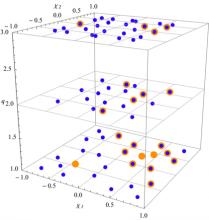
Abstract
The Numerical-Relativity-Analytical-Relativity (NRAR) collaboration is a joint effort between members of the numerical relativity, analytical relativity and gravitational-wave data analysis communities. The goal of the NRAR collaboration is to produce numerical-relativity simulations of compact binaries and use them to develop accurate analytical templates for the LIGO/Virgo Collaboration to use in detecting gravitational-wave signals and extracting astrophysical information from them. We describe the results of the first stage of the NRAR project, which focused on producing an initial set of numerical waveforms from binary black holes with moderate mass ratios and spins, as well as one non-spinning binary configuration which has a mass ratio of 10. All of the numerical waveforms are analysed in a uniform and consistent manner, with numerical errors evaluated using an analysis code created by members of the NRAR collaboration. We compare previously-calibrated, non-precessing analytical waveforms, notably the effective-one-body (EOB) and phenomenological template families, to the newly-produced numerical waveforms. We find that when the binary's total mass is ~100-200 solar masses, current EOB and phenomenological models of spinning, non-precessing binary waveforms have overlaps above 99% (for advanced LIGO) with all of the non-precessing-binary numerical waveforms with mass ratios <= 4, when maximizing over binary parameters. This implies that the loss of event rate due to modelling error is below 3%. Moreover, the non-spinning EOB waveforms previously calibrated to five non-spinning waveforms with mass ratio smaller than 6 have overlaps above 99.7% with the numerical waveform with a mass ratio of 10, without even maximizing on the binary parameters.